Day 3 of a 4-day Autumn Tour. It was a cloudy morning, with a brief shower at one point, but it brightened up around the middle of the day with some sunny intervals in the afternoon and lighter winds. Another pleasant day to be out.
Our desitination for this morning was Holkham. As we got out of the minibus, a very pale Common Buzzard was perched in a bush by Lady Anne’s Drive and we stopped to look at it in the scope. Regular here and a pitfall for the unwary, they often get reported as something rarer. A Marsh Harrier was quartering beyond. There as no sign of any Grey Partridges first thing but there has probably been quite a bit of disturbance from the construction of the new path from the horse box parking which goes right through what has historically been their favoured feeding area. Hopefully the works will only prove to be a temporary deterrent.
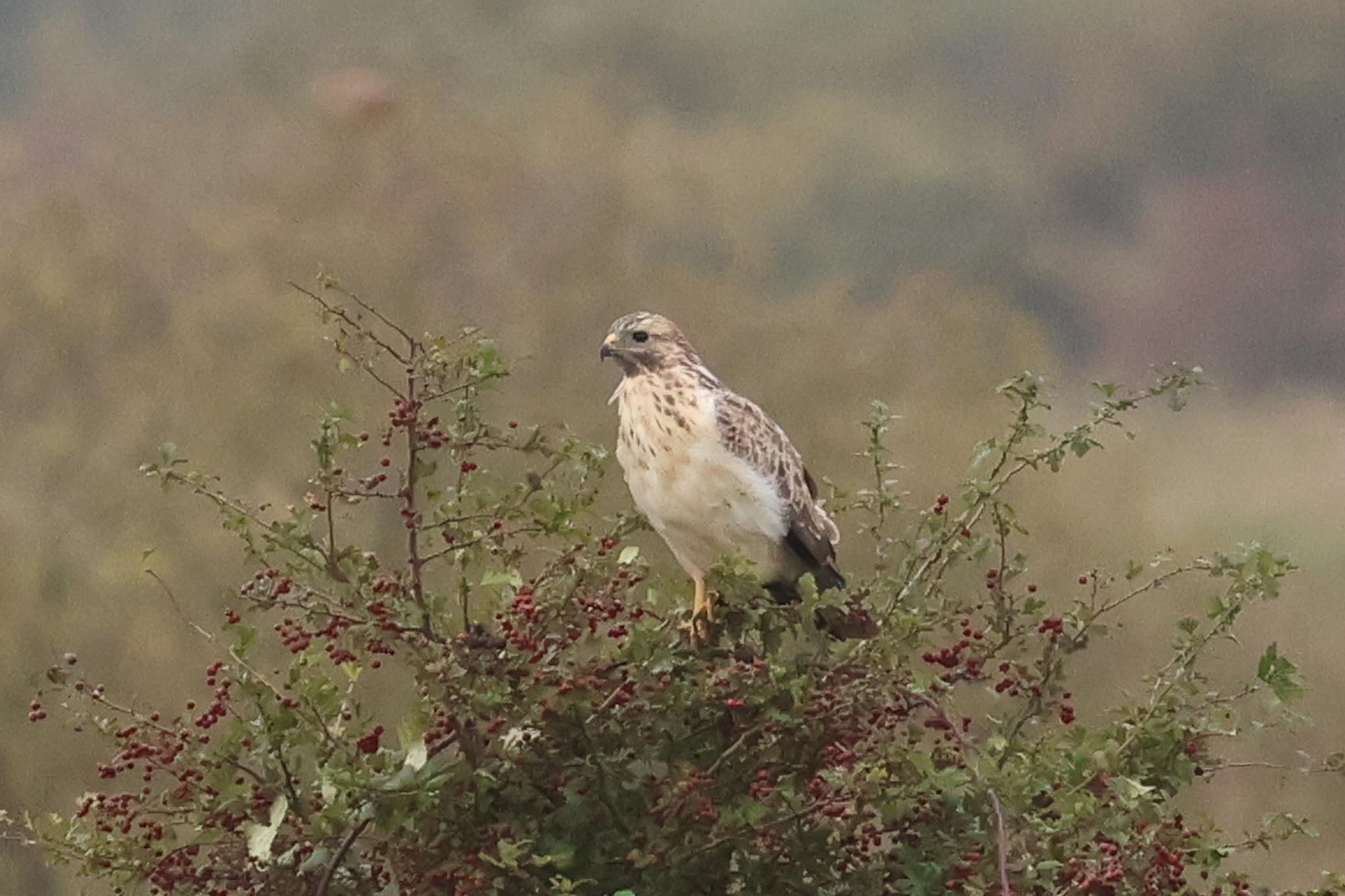
As we walked west along the track before the pines, we could hear a Brambling calling over the trees and a few Redwing and Starling flew in overhead. More freshly arrived migrants, here for the winter. A succession of Jays flew back and forth, presumably looking for acorns. A couple of Red Kites were hanging in the breeze over the edge of the pines.
We stopped at Salts Hole where a couple of Little Grebes were diving just in front of us. There were quite a few Gadwall and Mallard out on the water, and a couple of Teal, but nothing else of note here today.
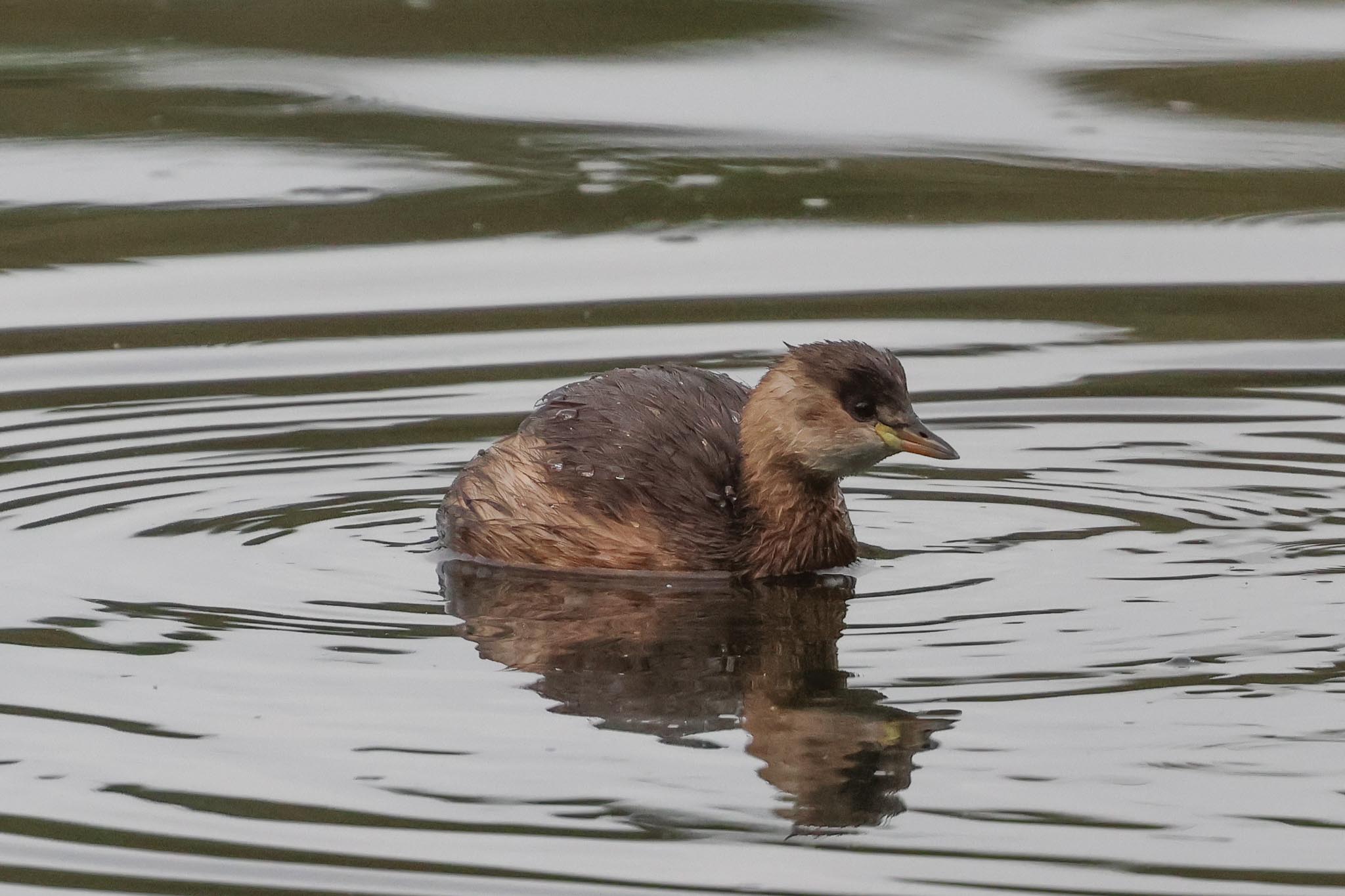
A little further on, we stopped again at the gate which looks out over the grazing marsh. There were several Curlews feeding in the long grass and a Brown Hare which crouched staring at us for a couple of minutes before racing off. A Chinese Water Deer disappeared into the ditch. A Mistle Thrush was perched in the top of a dead elder on the edge of the reedbed and a male Stonechat was flycatching from the top of the brambles at the far side of the grass.
Fortuitously, we got in to Washington Hide just as it started to rain. It was just a brief shower, but from we sat and scanned and picked up two Great White Egrets and a single Cattle Egret out with the cows.
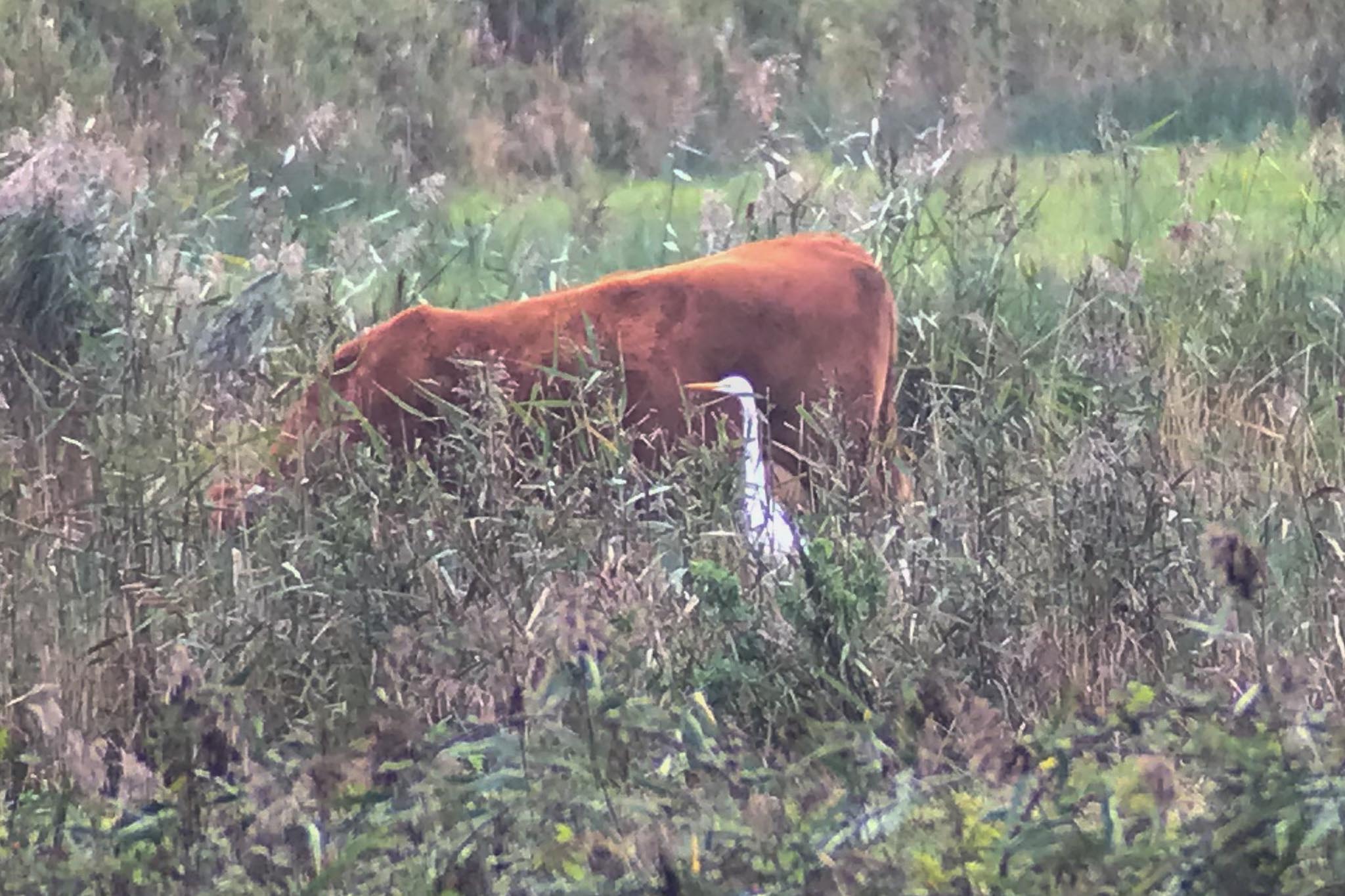
It quickly brightened up again, so we headed back out again to make the most of it. We walked on down to the end of the boardwalk to look at the beach. There were lots of Common Scoter out on the sea in various rafts, a scattering of Razorbills and Great Crested Grebes, and several Red-throated Divers, including one still largely in breeding plumage with a red throat. A few Gannets flew past in the distance, and we caught the tail end of a Manx Shearwater which flew west. We could see a few lines of Brent Geese coming in out over the water, more small flocks of Starlings (a bit of a recurring theme at the moment), and a couple of little groups of Skylarks arriving too.
Back to the track the other side of the pines, we carried on our way west. With an easterly wind overnight, we were hoping we might find more migrants freshly arrived today, but the trees were disappointingly quiet. It appeared that the tit flocks were also feeding up in the pines and not in the trees along the south edge this morning too. There were still lots of Common Darter dragonflies enjoying the sunshine and a Red Admiral butterfly on the brambles.
The Joe Jordan hide is still closed – we understand that a replacement is planned, but there is no sign of it coming yet. We looked over the wall and had a quick scan of the grazing marsh, but we couldn’t see anything of note in the trees today, so we carried on.
One of the wardens had told us that there had been a Yellow-browed Warbler calling earlier in the sallows just beyond crosstracks but there was no sign of it now, despite the trees here being nicely sheltered from the wind. We did a quick loop of the ‘Bluetail Trail’ then continued on to the west end, hearing more tits calling from up in the pines on the way. A brief look from the gate at the end of the track failed to produce anything, so there was nothing to encourage us to to walk on into the dunes today.
Walking back, some of the tits we had heard on our way out now dropped out of the pines into the sallows the other side of the track, including a couple of Coal Tits and a Treecreeper. We followed the flock back to the trees by the crosstracks. The Yellow-browed Warbler called again but it appeared to come from deep in the sallows. We waited to see if it might show itself, but it had gone quiet again and there was no movement in the trees. A Chiffchaff called from the sallows behidn us. A Great Spotted Woodpecker flew over our heads and landed in a tall pine nearby where we could see it was a male, with a red band on the back of its neck.
As we walked back to Lady Anne’s Drive, the sun finally came out. We had to go to the minibus to get our lunches, and as we made our way back to the picnic tables by the Lookout, the covey of six Grey Partridges had now flown in. We had some good views of them as they fed in the grass.
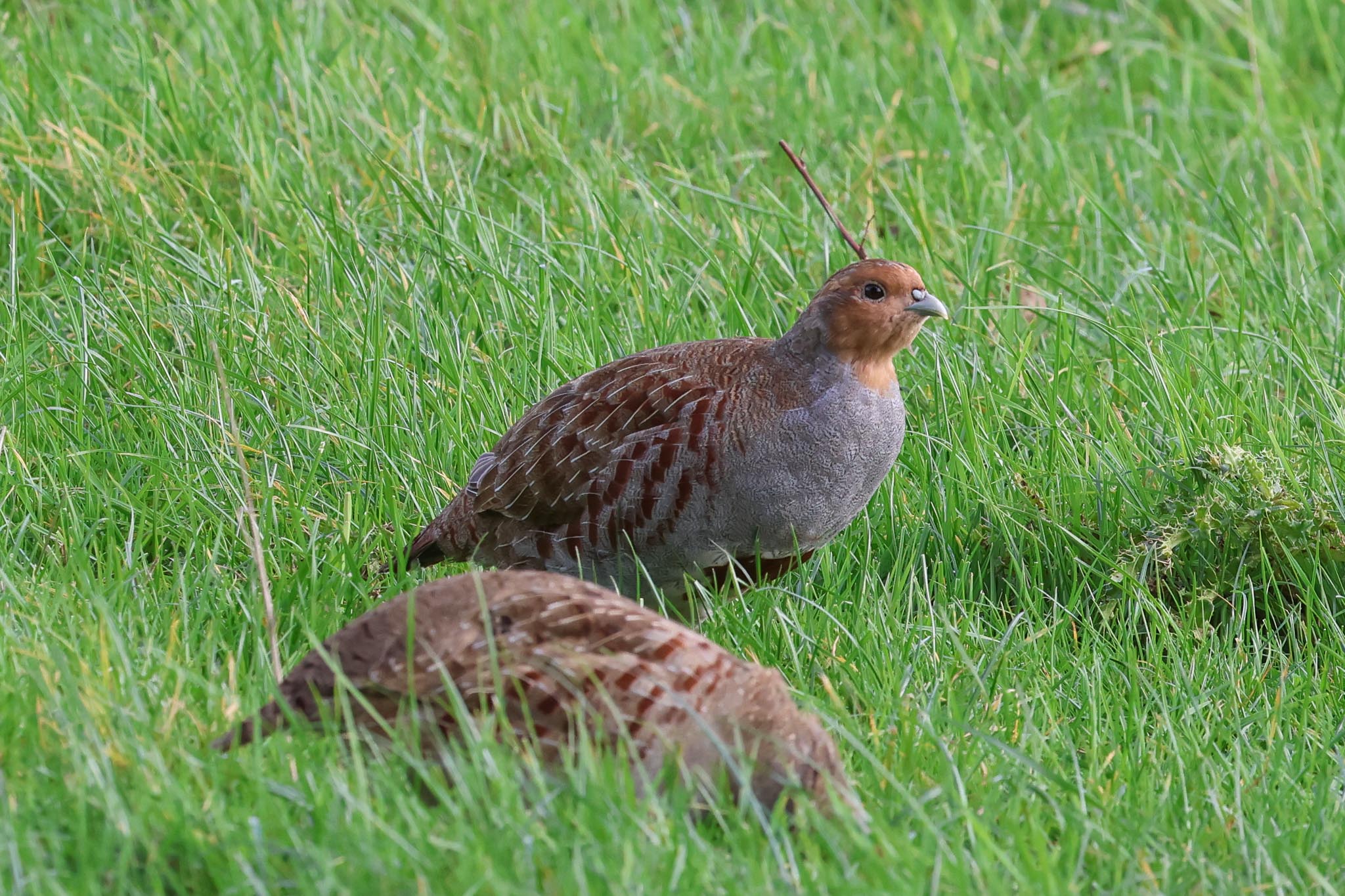
We ate lunch on the picnic tables outside in the sunshine. Another couple of Red Kites drifted past along the edge of the pines, as did two Ravens, one harried by a Carrion Crow. Later we found two Red Kites and what were presumably the same two Ravens on the ground out on the grazing marsh – presumably there was some carrion out there which had attracted them down. There were still a few thrushes and Starlings coming in over the pines too.
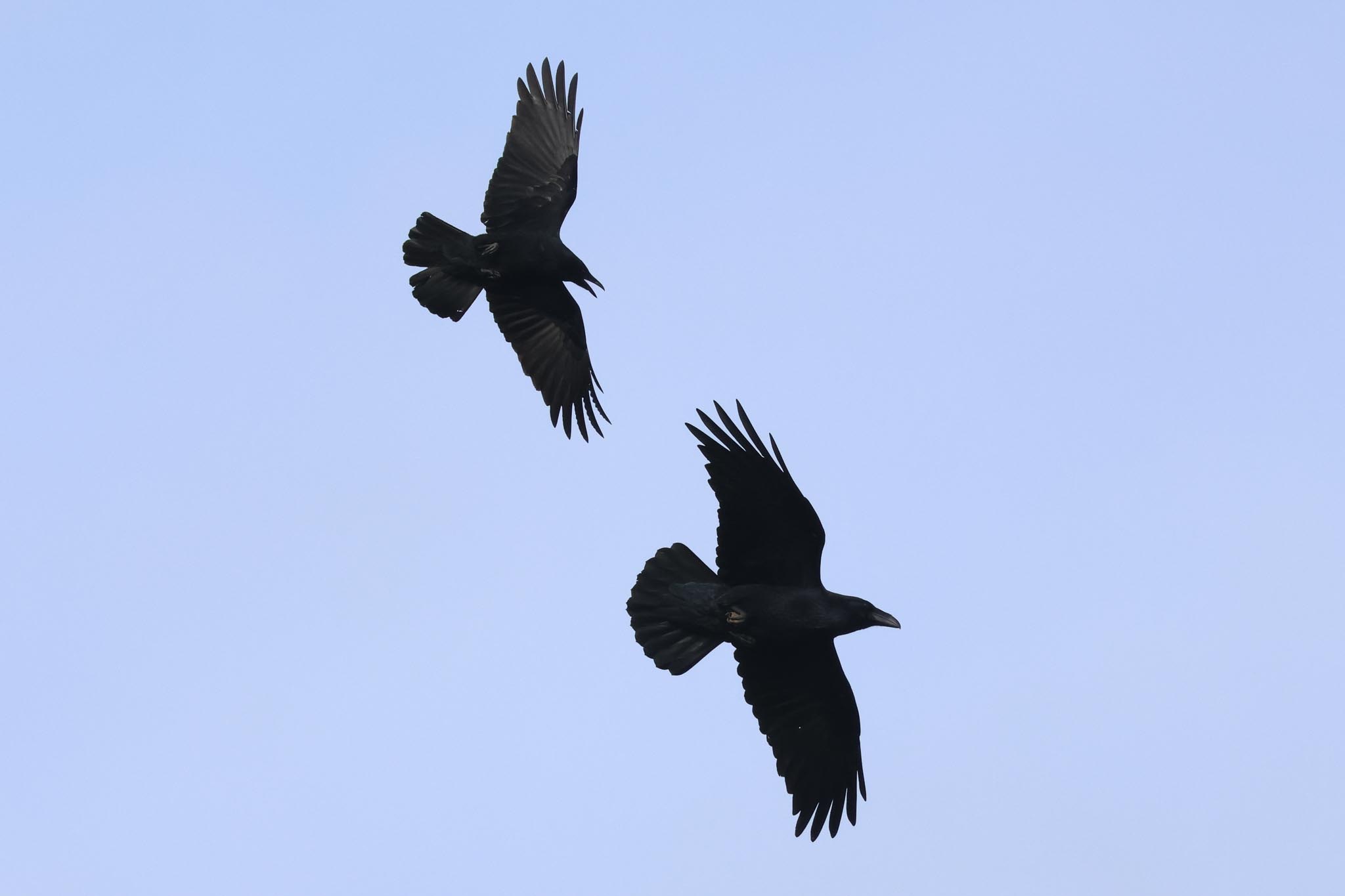
As we were walking back to the minibus after lunch, we noticed a bird drop in on the new scrape out on the grazing marsh and we were surprised to find it was a Green Sandpiper. It didn’t stay long, then flew up and circled round before appearing to land again behind the Lookout Cafe. A nice bonus – most of them have gone south already or moved inland to spend the winter.
We made our way round to the pools the other side of Wells, at North Point. The water levels are up after the recent rain, and there are lots of ducks on here now for the winter – Wigeon, Teal, a few Shoveler and a good number of Pintail. Some of the Pintail started flying up in small flocks and off out over the fields towards the saltmarsh. There were quite a few Black-tailed Godwits and Ruff in with the ducks towards the back of the pool east of the track too.
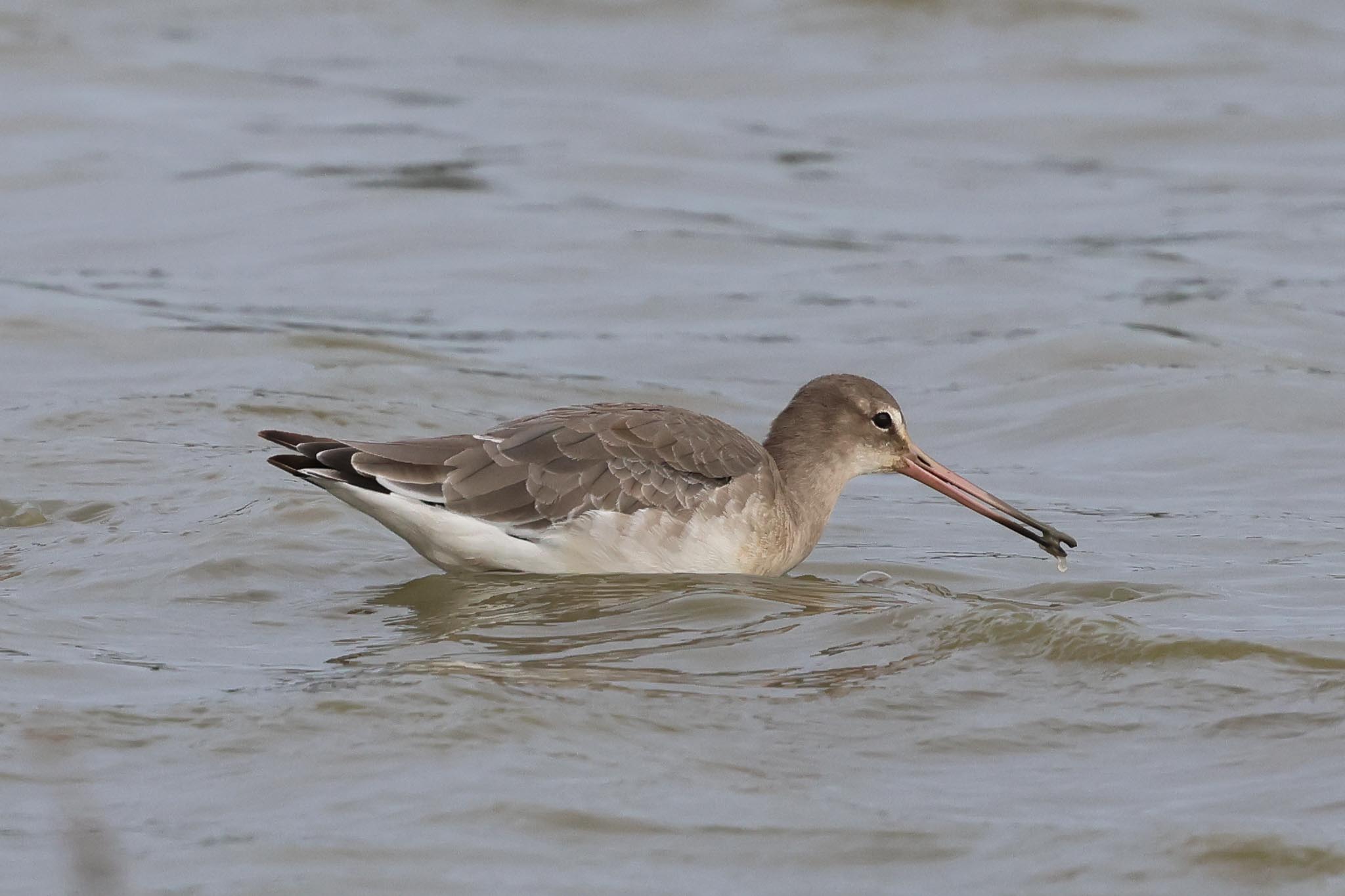
We walked down the track to scan the rushy edges of the pool and found a couple of Common Snipe on the edge of the water. Another flew in and dropped down on the near edge, but disappeared into the rushes. A small group of Black-tailed Godwits were feeding in the water along the near edge, where we had a very good view of them.
Six Pink-footed Geese flew over and a short while later we heard more calling behind us and turned to see several thousand come up over the fields inland. An impressive sight. Several hundred flew in overhead, and dropped down over the fields towards the saltmarsh.
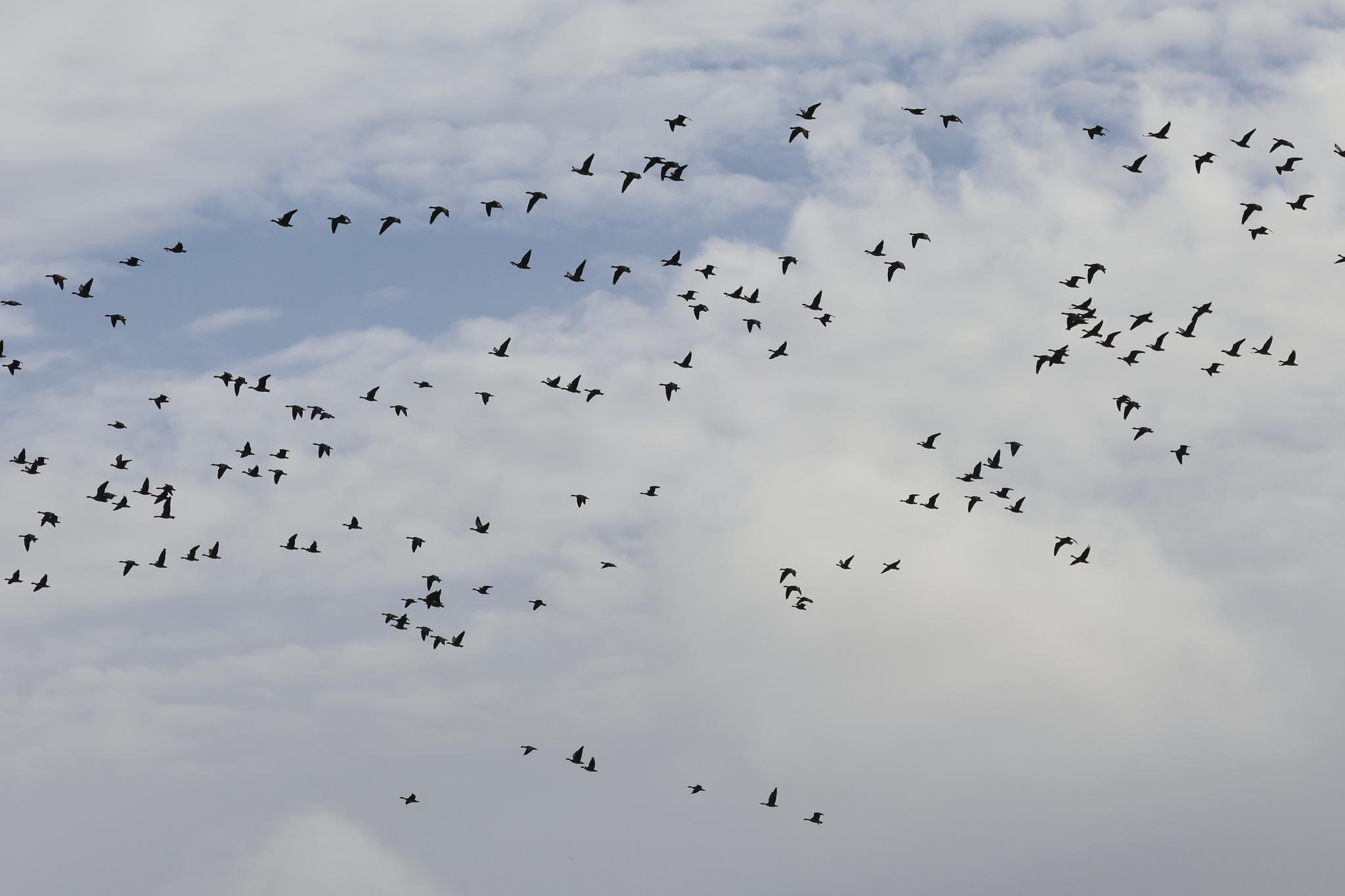
We normally like to finish our last day at this time of the year with a trip down into the edge of the Brecks, but with weather for tomorrow forecast to be challenging, we decided to head inland this afternoon to look for Stone Curlews. The number of birds at the closest of their regular post-breeding gathering sites is down this year, probably because some of their favoured fields have tall vegetation in them at the moment making them unsuitable.
After a long walk this morning, everyone was pleased of a bit of a rest as we drove down to the Brecks. At our first stop, we could immediately see one Stone Curlew distantly in the field, but it walked out of view before everyone could get a look at it through the scope. We drove a bit further on, and could see more now – we counted at least 13 Stone Curlews, and there were possibly even more hidden from view. Some were back on, standing facing in to the wind, away from us, but others turned, and we could see their staring yellow eyes.
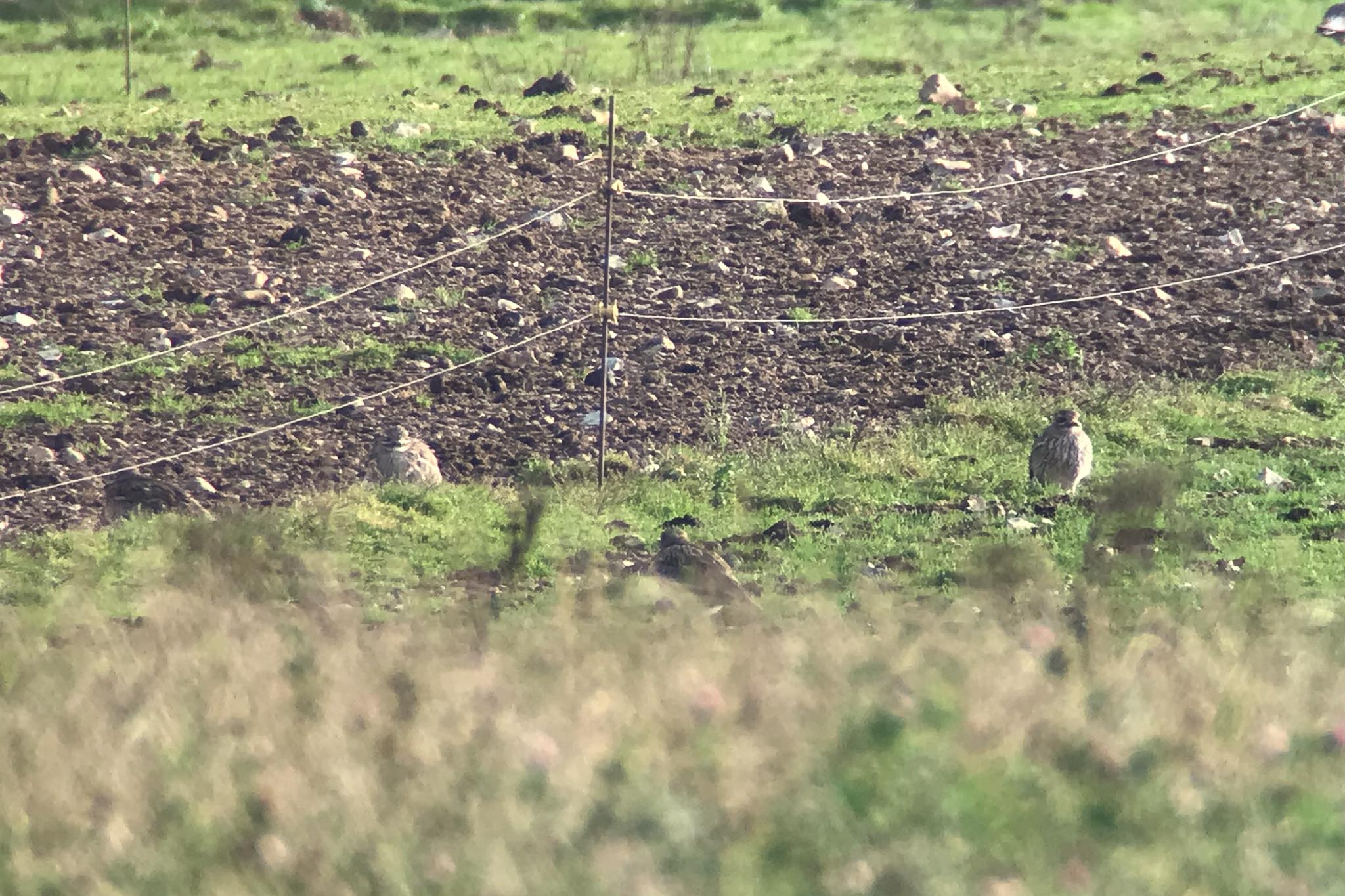
There were lots of Lapwings in the fields here too, including several close to the road in the winter wheat opposite. There were several Brown Hares and a large number of Red-legged Partridges in the field too. After struggling to import them from France last year due to bird flu, many gamekeepers seem to be trying to make up for it this year by releasing larger than ever numbers – they are everywhere!
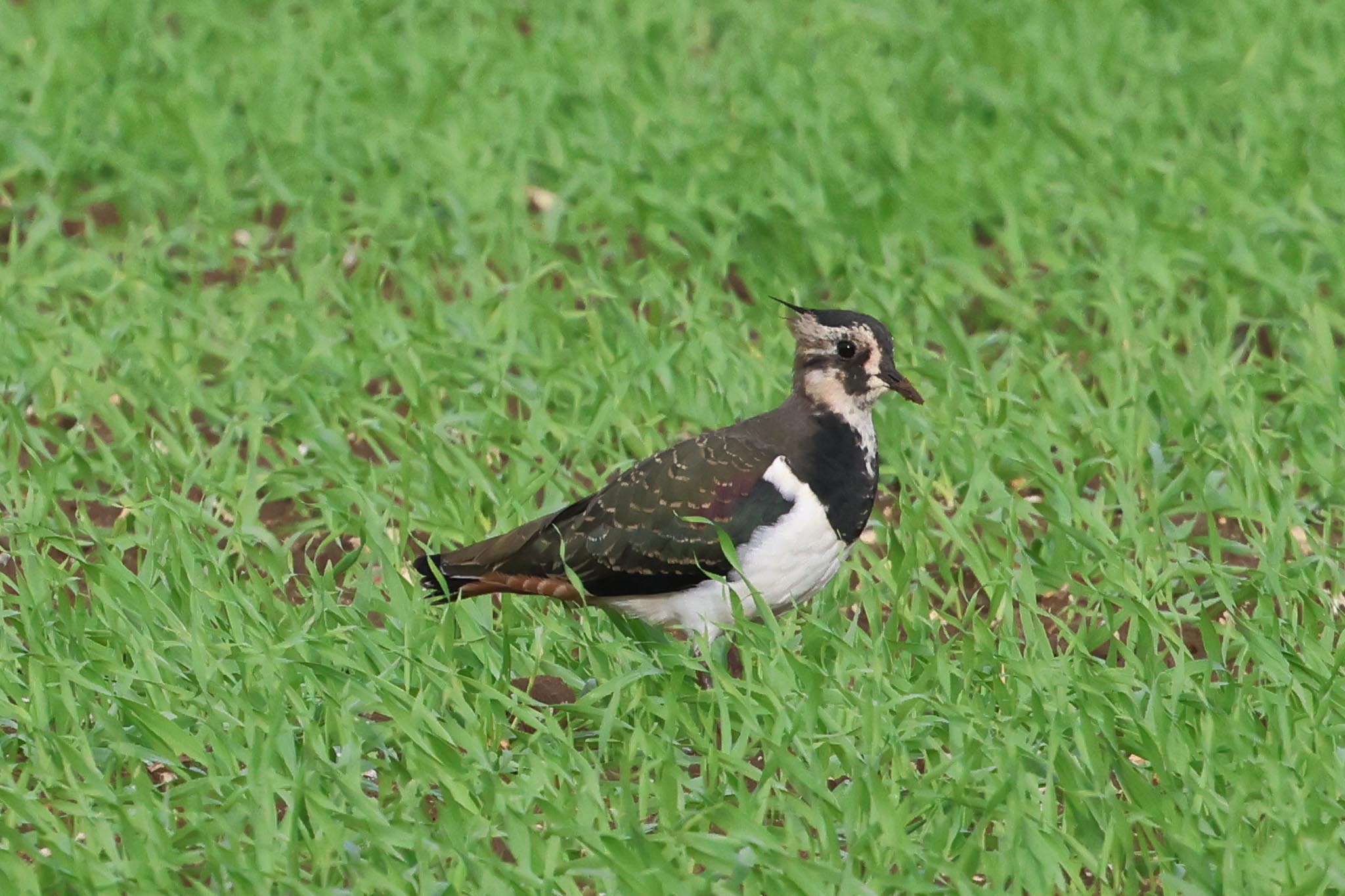
A Greenfinch flew out of the hedge and round over our heads calling, still a rather scarce bird these days. A large flock of Linnets was feeding in the pig fields, and a good number of Starlings and three Stock Doves landed on the wires above. A huge flock of Jackdaws circled up at the back calling loudly. It was a nice way to end the day here watching all the birds in the sunshine.
















